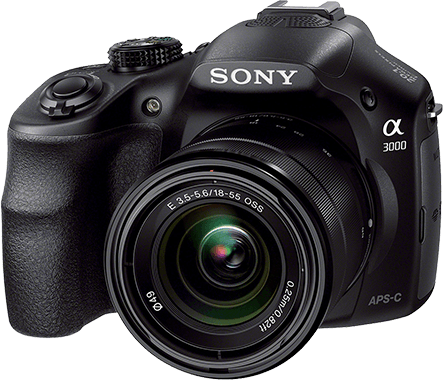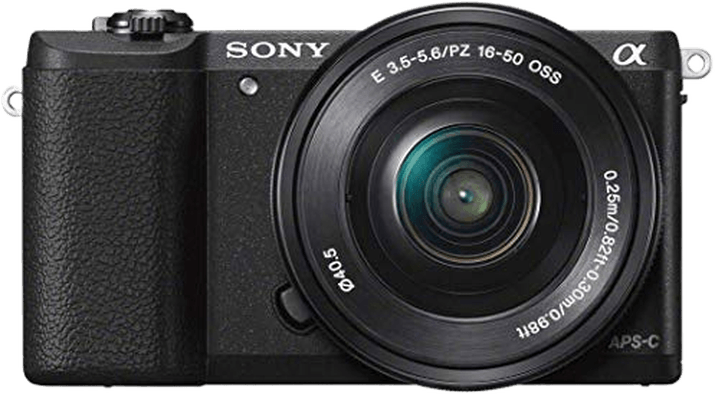Sony a3000 vs a5100 Comparison
Sony a3000

Sony a5100

The Sony a5100 emerges as the winner with a score of 60/100, outperforming the Sony a3000, which scored 49/100. Both cameras are mirrorless and were released in 2013 and 2014, with launch prices of $400 and $550, respectively. They share several specifications, making them quite similar in some aspects.
The Sony a5100’s edge comes from its compact size, measuring 110 x 63 x 36mm, and lightweight build, weighing 283g, making it more portable than the a3000. The a3000, on the other hand, has a larger body, measuring 128 x 91 x 85mm, and weighs 411g.
Despite the Sony a3000’s lower score, it still offers some advantages, such as a lower launch price, making it a more affordable option for budget-conscious photographers. However, the Sony a5100’s higher score and compact design make it a more appealing choice for those prioritizing portability and convenience.
Sony a3000 vs a5100 Overview and Optics
After a thorough comparison of the Sony a3000 and the Sony a5100’s optics, the Sony a5100 emerges as the winner with a score of 66/100, an 8-point lead over the Sony a3000’s 58/100. Both cameras share several specifications, including the CMOS sensor type, APS-C sensor size, Sony E lens mount, and lack of image stabilization.
The Sony a5100 outperforms the a3000 in several ways. First, it has a higher megapixel count of 24.3 compared to the a3000’s 20.1, allowing for more detailed and sharper images. Additionally, the a5100 has a faster shooting speed of 6 frames per second (fps) compared to the a3000’s 2.5 fps, making it better suited for capturing fast-moving subjects. The a5100 also boasts a superior Bionz X processor and a higher DXOMARK sensor score of 80, compared to the a3000’s Bionz processor and sensor score of 78. These advantages contribute to the a5100’s enhanced performance and image quality.
On the other hand, the Sony a3000 has fewer favorable points when compared to the a5100. While the a3000’s 20.1-megapixel sensor, 2.5 fps shooting speed, and Bionz processor are not as advanced as the a5100’s features, they still provide decent performance for basic photography needs. However, it falls short in comparison to the a5100’s capabilities.
Considering the differences in their optics, the Sony a5100 is the clear winner, offering superior image quality, faster shooting speed, and an advanced processor. The Sony a3000, while not as impressive, still offers decent performance for those with basic photography needs. Ultimately, the choice between these two cameras will depend on the user’s requirements and preferences.
Sony a3000 vs a5100 Video Performance
When comparing the video capabilities of the Sony a3000 and the Sony a5100, both cameras have the same video score of 56/100. This means that their video performance is identical, and neither camera is a clear winner in this aspect. Both cameras share several common video specifications, such as Full HD video resolution, maximum video dimensions of 1920 x 1080, and a maximum video frame rate of 60fps. Additionally, neither camera has built-in time-lapse functionality.
Since both cameras have the same video score and specifications, it is difficult to determine which camera is better in terms of video capabilities. However, it is essential to highlight that both cameras offer good quality Full HD video recording, which is suitable for most casual users and amateur videographers.
On the other hand, it is also important to note that neither camera excels in video capabilities, as they lack features such as built-in time-lapse functionality and higher video resolutions like 4K. This may be a drawback for some users who require these advanced video features for their projects or content creation.
Given that both cameras have the same video capabilities, the choice between the Sony a3000 and Sony a5100 should be based on other factors such as price, design, and additional features that cater to the user’s specific needs and preferences. Ultimately, both cameras provide satisfactory video performance for those who do not require advanced video features.
Sony a3000 vs a5100 Features and Benefits
The Sony a5100 wins the feature comparison with a score of 54/100, while the Sony a3000 scores 36/100. Both cameras share some specifications, such as a 3-inch screen, no GPS, WIFI connectivity, and no Bluetooth. However, the Sony a5100 surpasses the a3000 in certain areas, making it a better choice for those prioritizing advanced camera features.
The a5100 has a higher screen resolution, with 921,600 dots compared to the a3000’s 230,400 dots. This difference results in a clearer and sharper image display on the a5100, making it easier to review and edit photos. Additionally, the a5100 has a touchscreen, whereas the a3000 does not. The touchscreen provides a more intuitive and efficient way to navigate the camera’s settings and options.
Both cameras have a flip screen, but the a5100 is better in this regard due to its touchscreen capabilities. This combination allows for easier self-portraits and shooting at difficult angles.
The a3000 does not have any advantages over the a5100 in terms of features. Its lower score reflects its lack of advanced specifications compared to the a5100. However, it is important to consider other aspects such as price, performance, and personal preferences when choosing a camera.
Considering the feature comparison, the Sony a5100 is the better camera due to its higher resolution screen and touchscreen capabilities. The a3000 falls short in this area, making the a5100 a more appealing choice for those prioritizing advanced camera features. However, it is essential to take into account other factors before making a final decision.
Sony a3000 vs a5100 Storage and Battery
The Sony a3000 wins the storage and battery comparison with a score of 27/100, while the Sony a5100 scores 24/100. Both cameras have one memory card slot, accepting SD/SDHC/SDXC and Memory Stick Pro Duo cards. They also use the same NP-FW50 battery type and lack USB charging capabilities.
The Sony a3000 has an advantage in battery life, providing 470 shots per charge compared to the Sony a5100’s 400 shots. This longer battery life makes the a3000 more suitable for extended shooting sessions.
On the other hand, the Sony a5100 accepts an additional memory card format, the Memory Stick Pro-HG Duo, offering slightly more versatility in storage options. However, this advantage is minimal as both cameras still only have one memory card slot.
Considering the storage and battery aspects, the Sony a3000 is the better choice due to its longer battery life, despite the a5100’s slight advantage in memory card compatibility.
Sony a3000 vs a5100 – Our Verdict
Are you still undecided about which camera is right for you? Have a look at these popular comparisons that feature the Sony a3000 or the Sony a5100:

